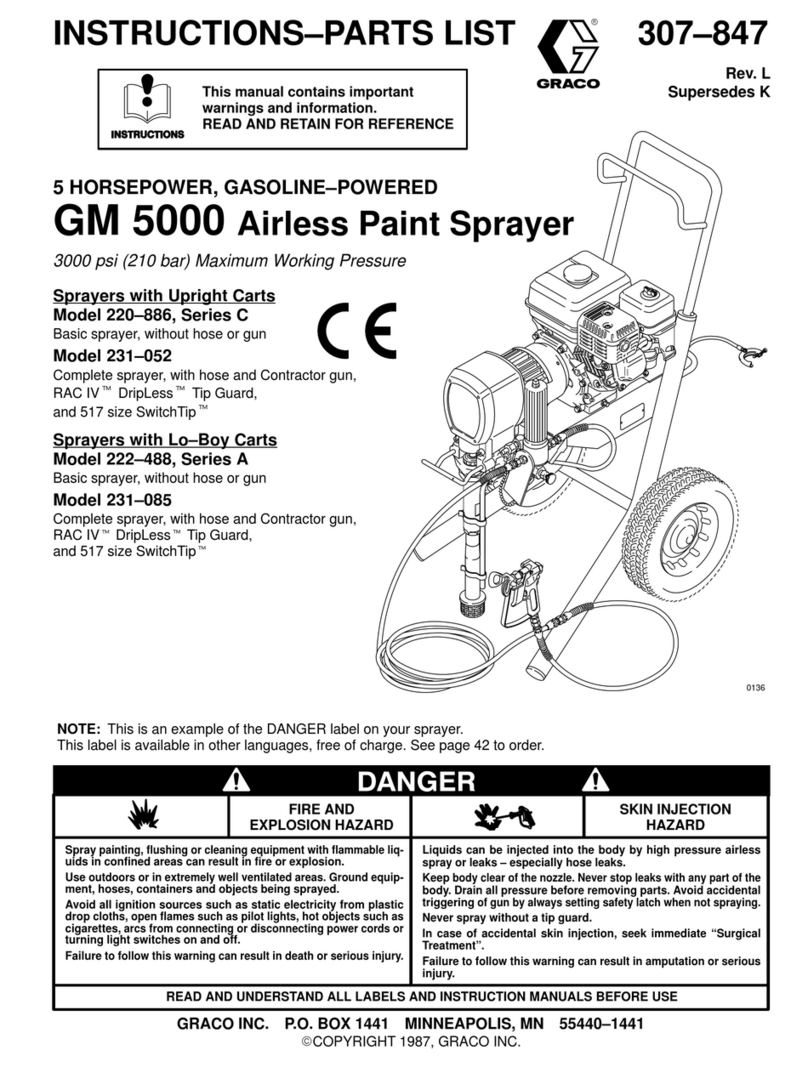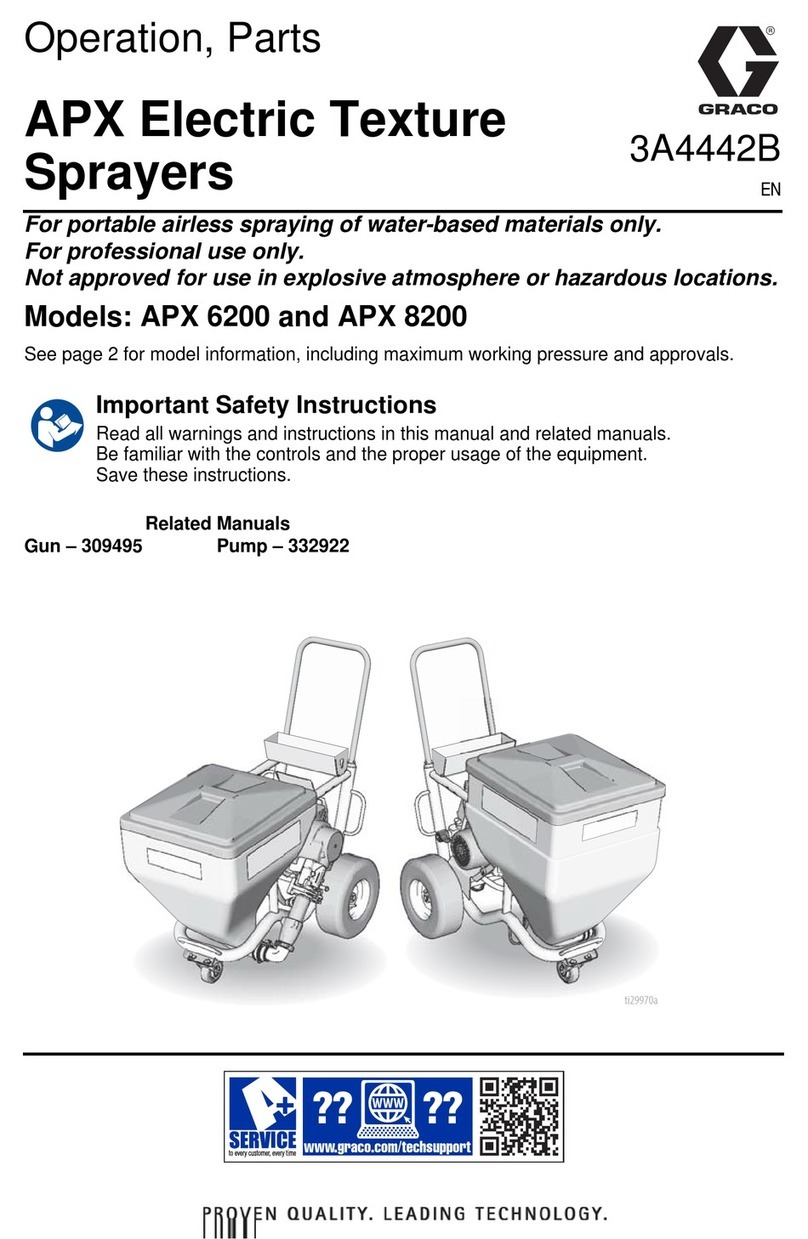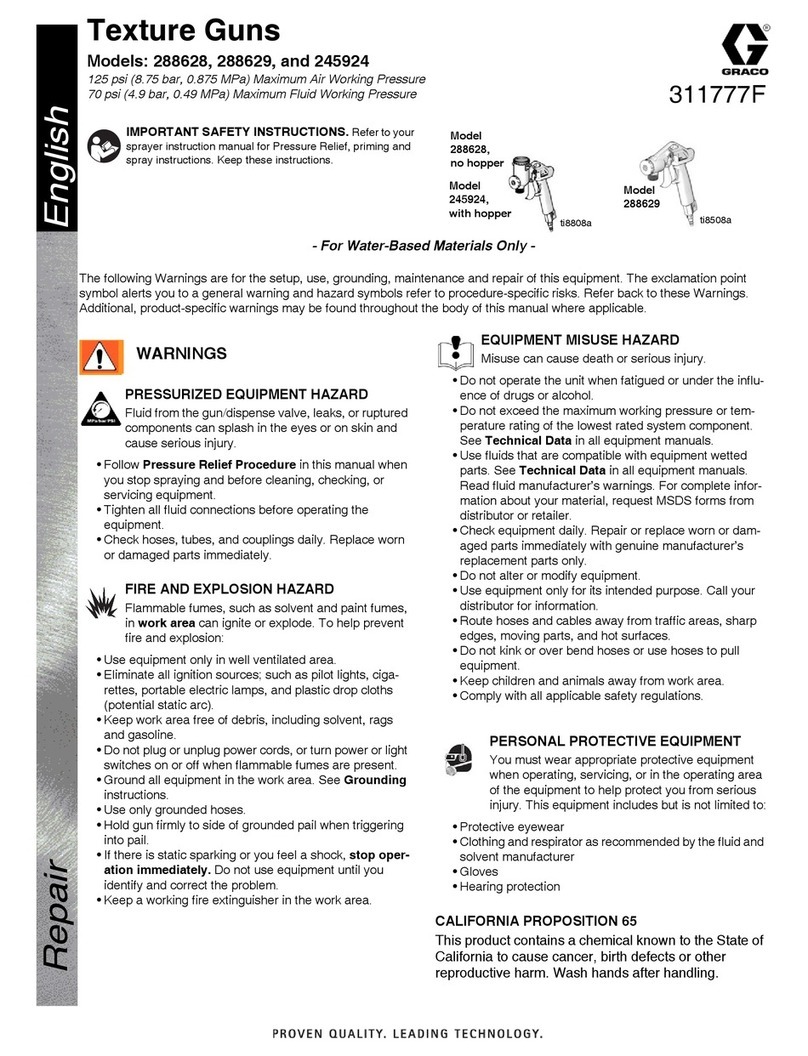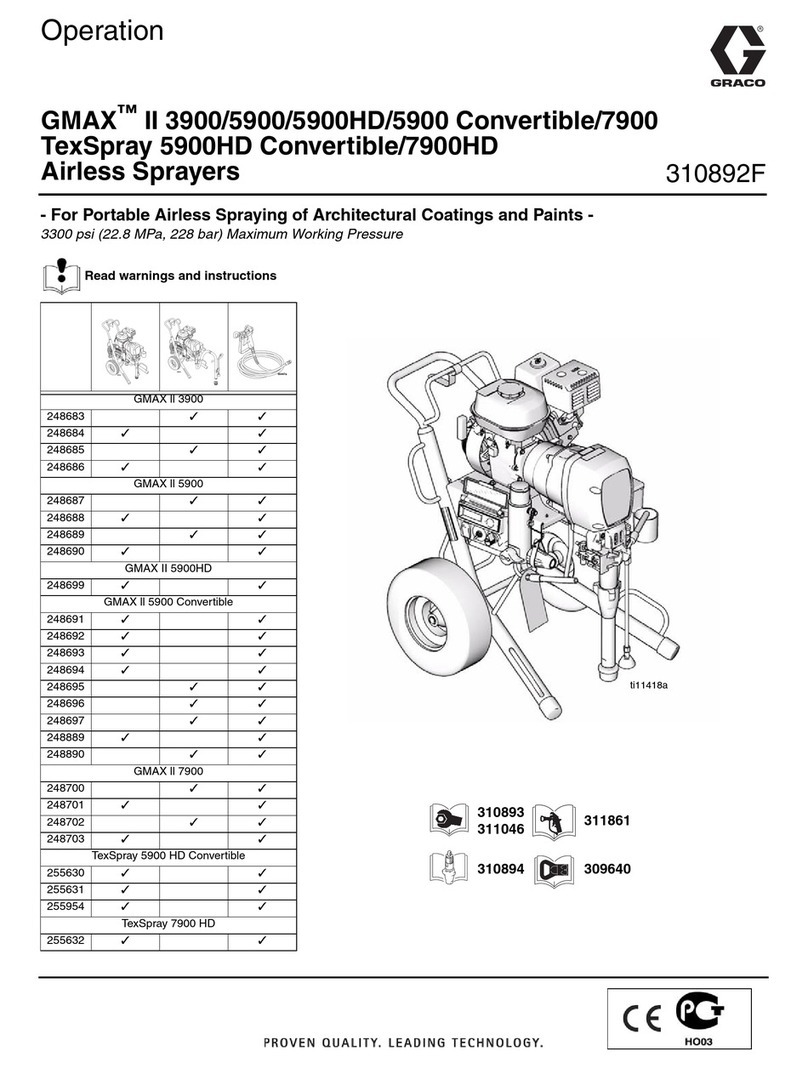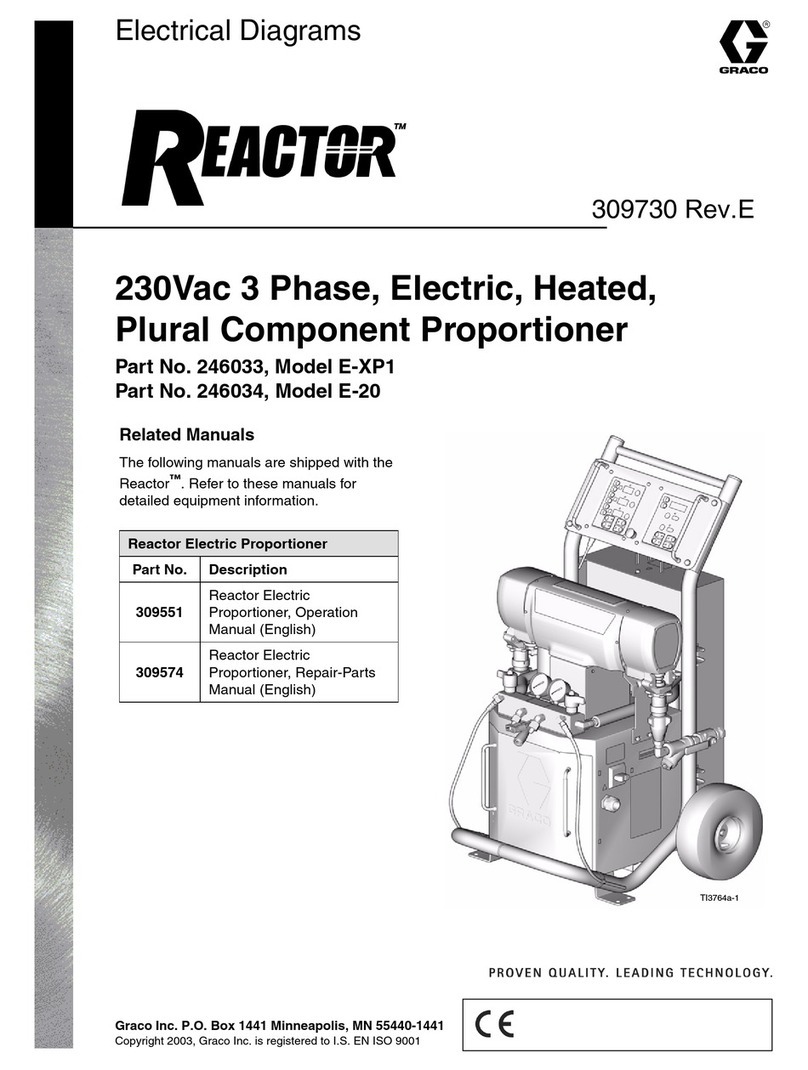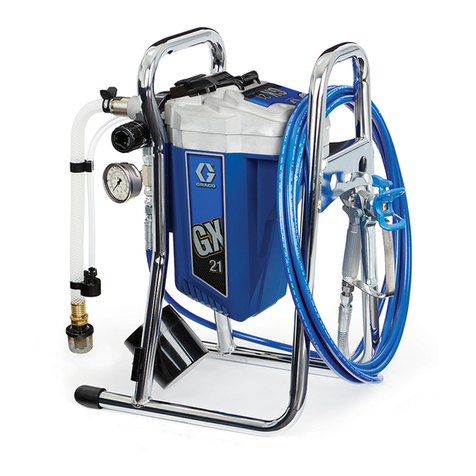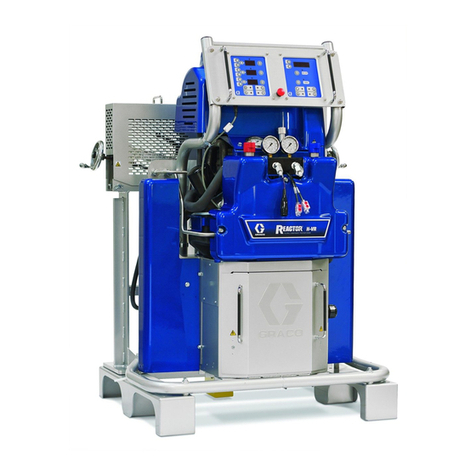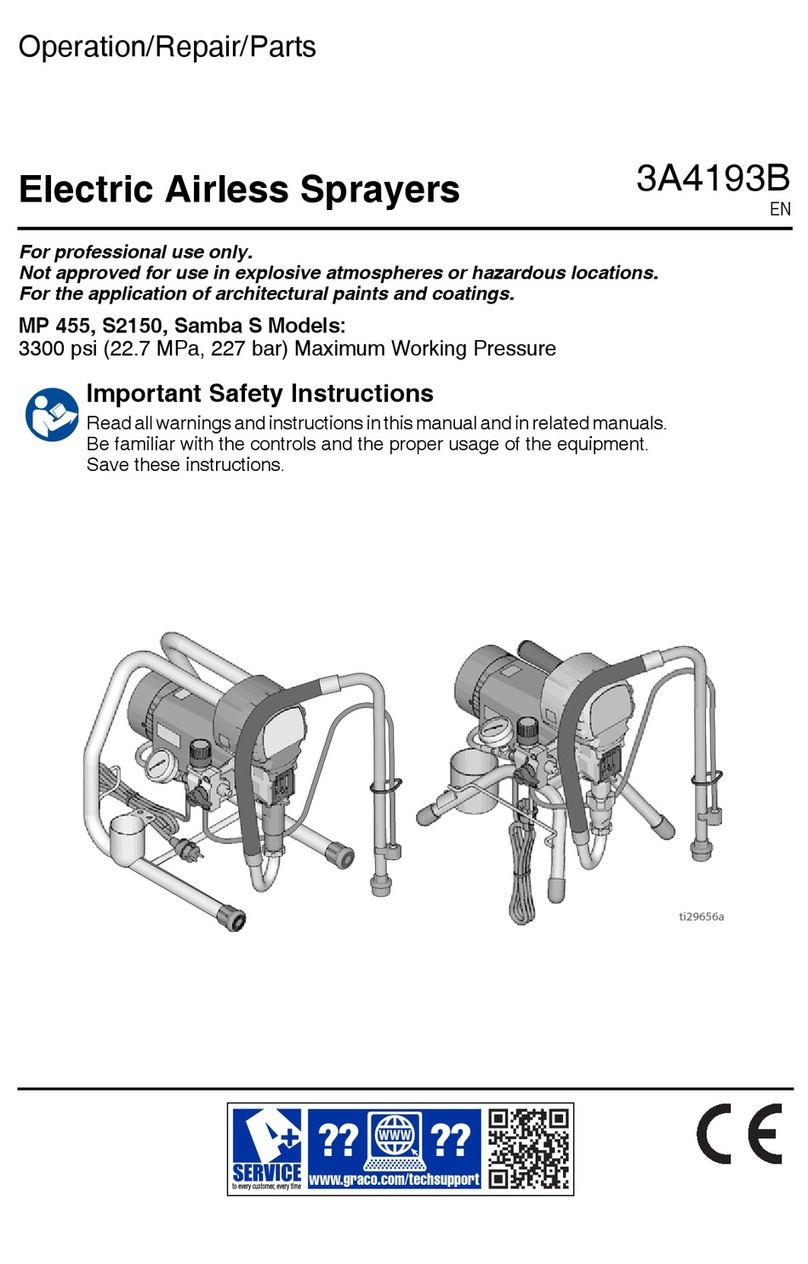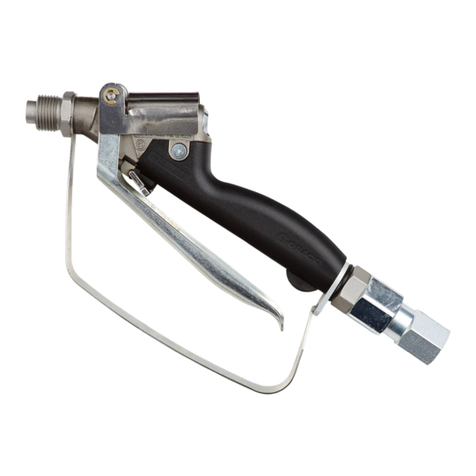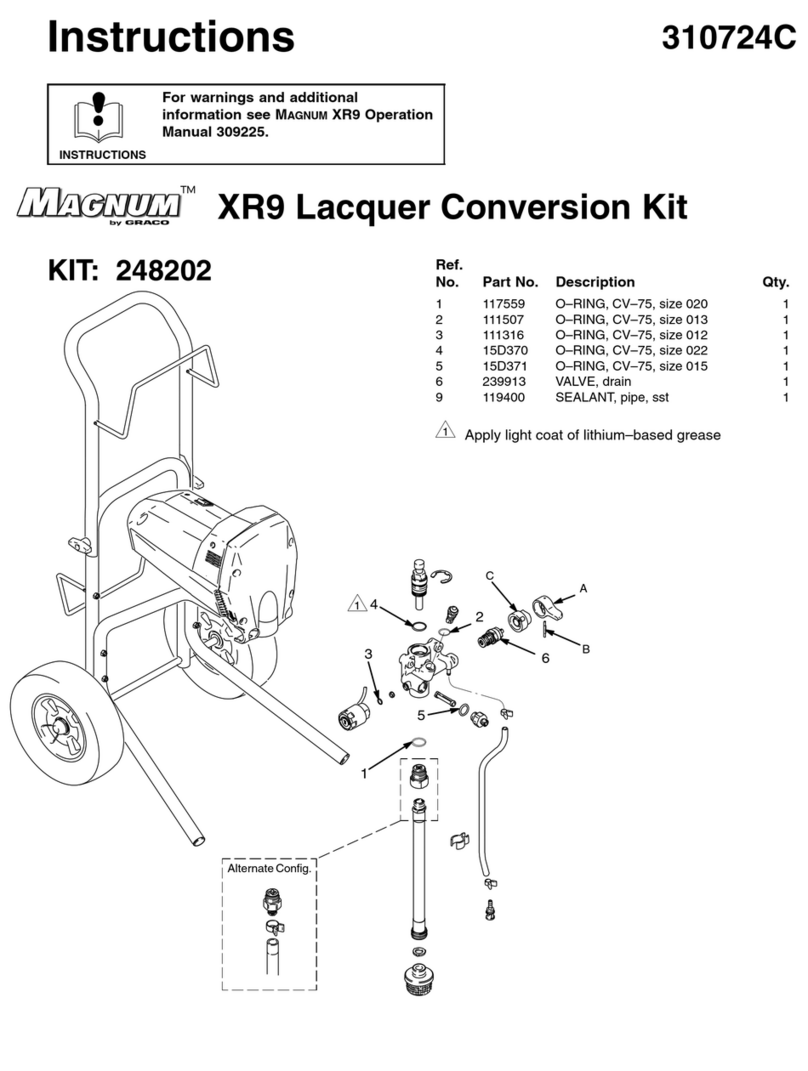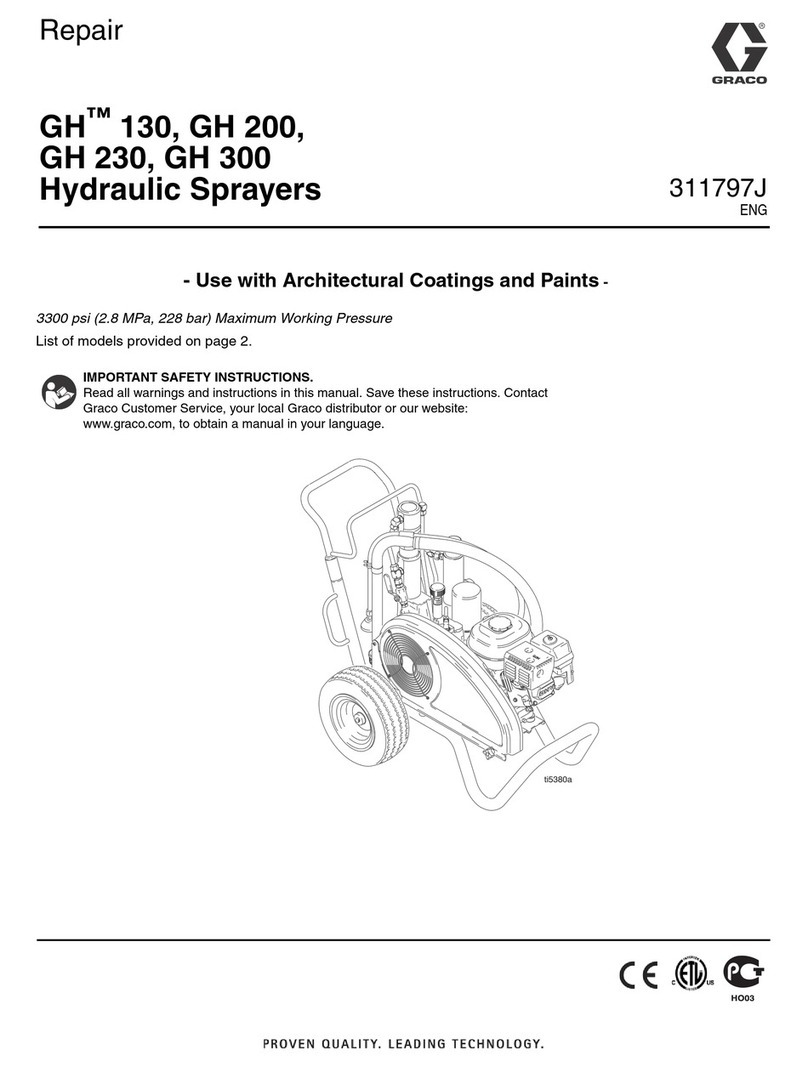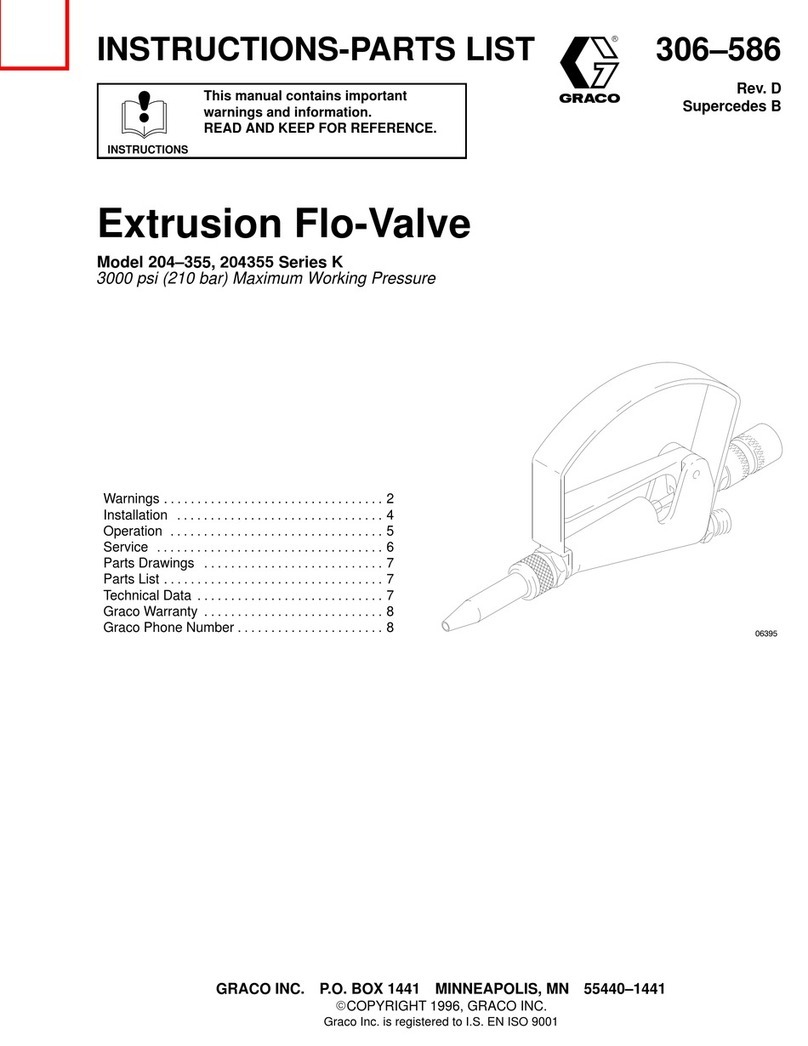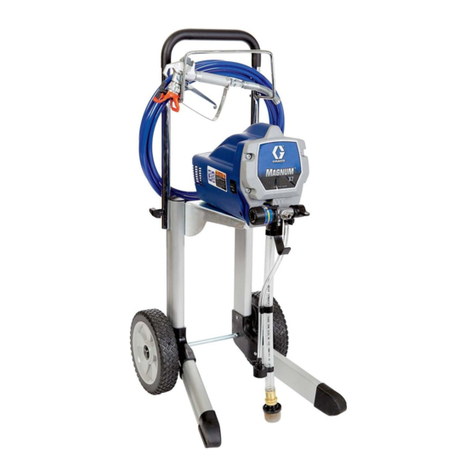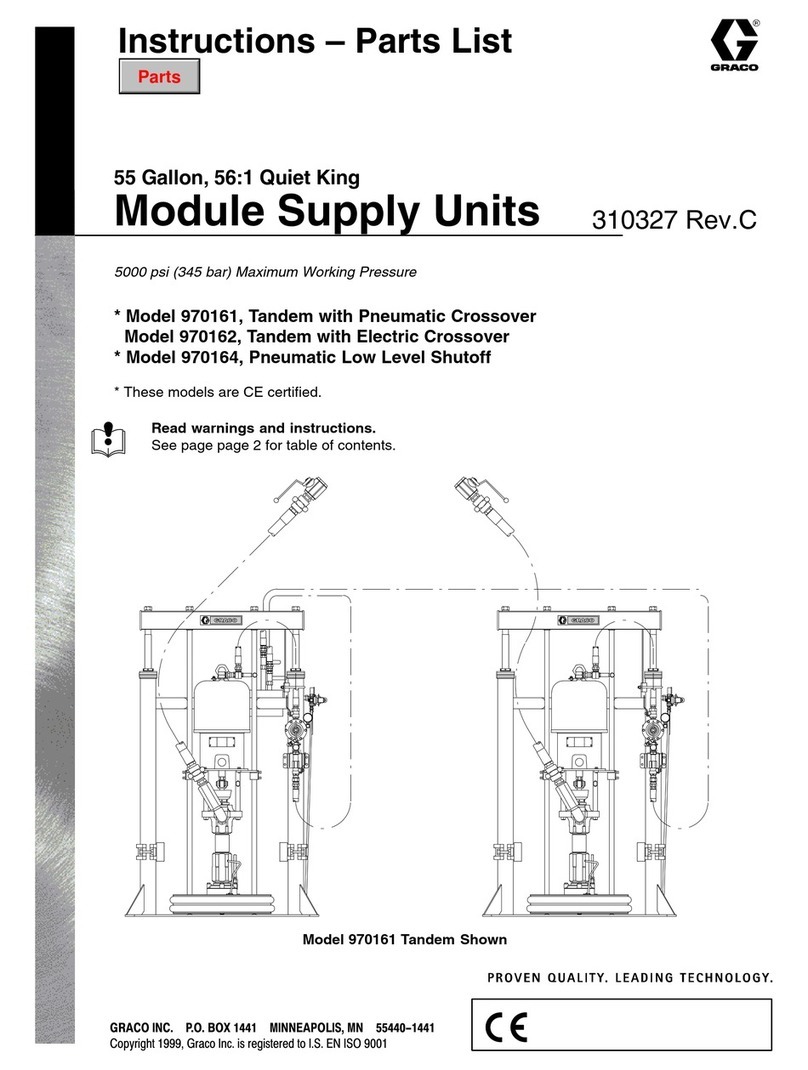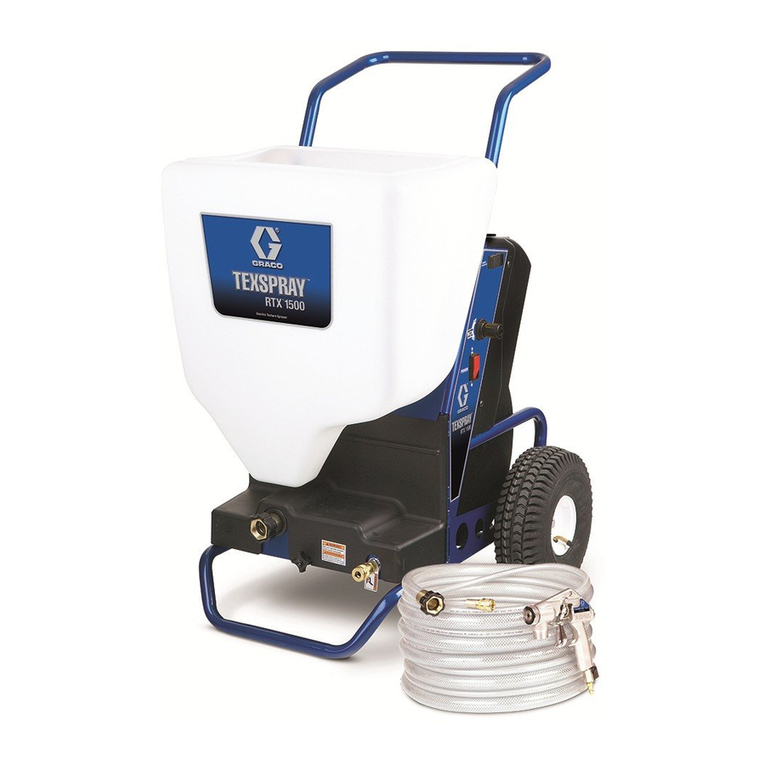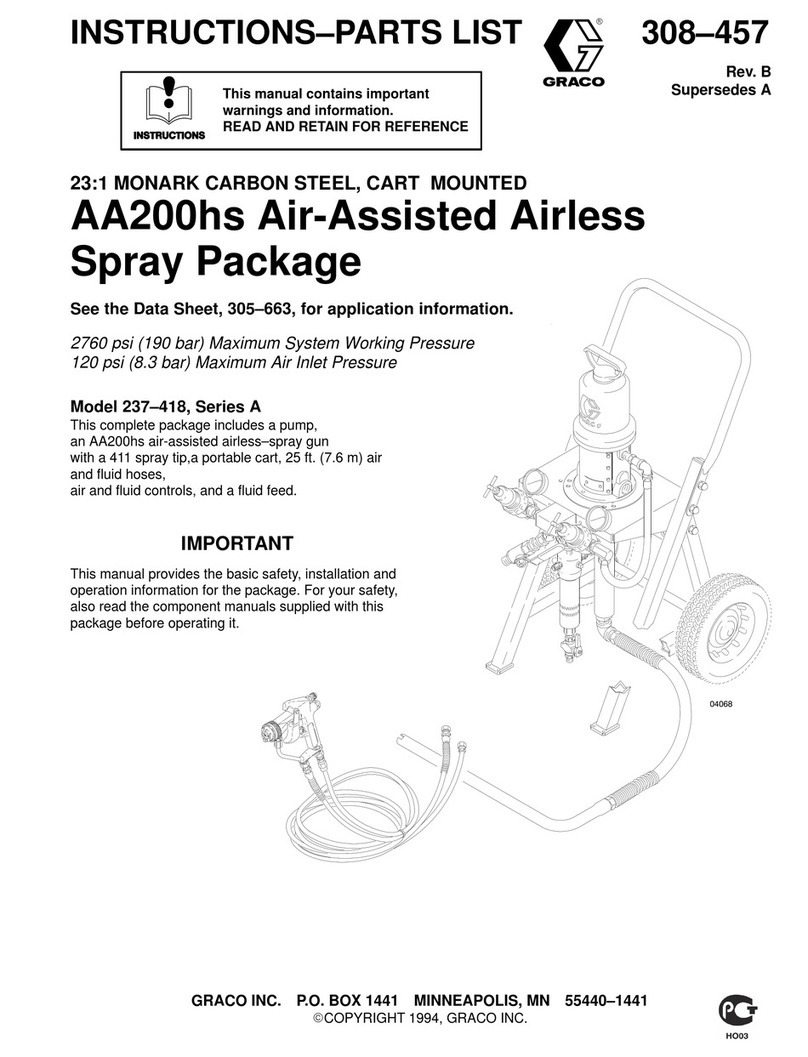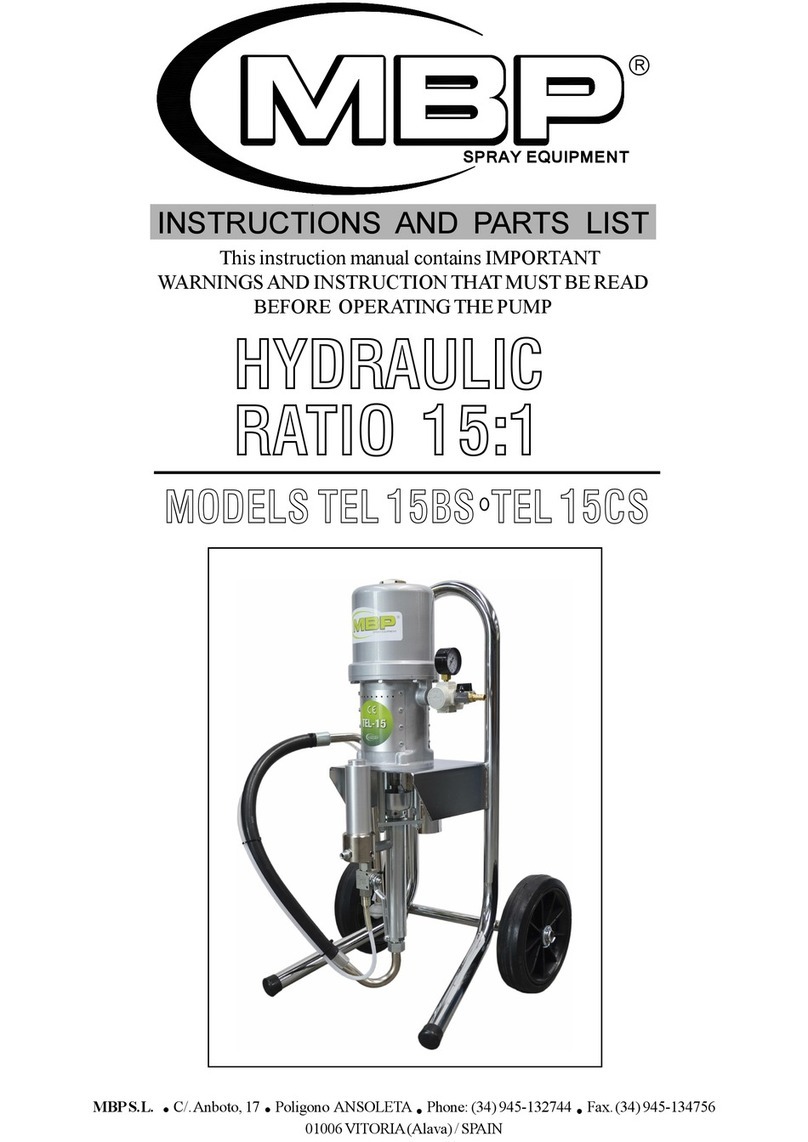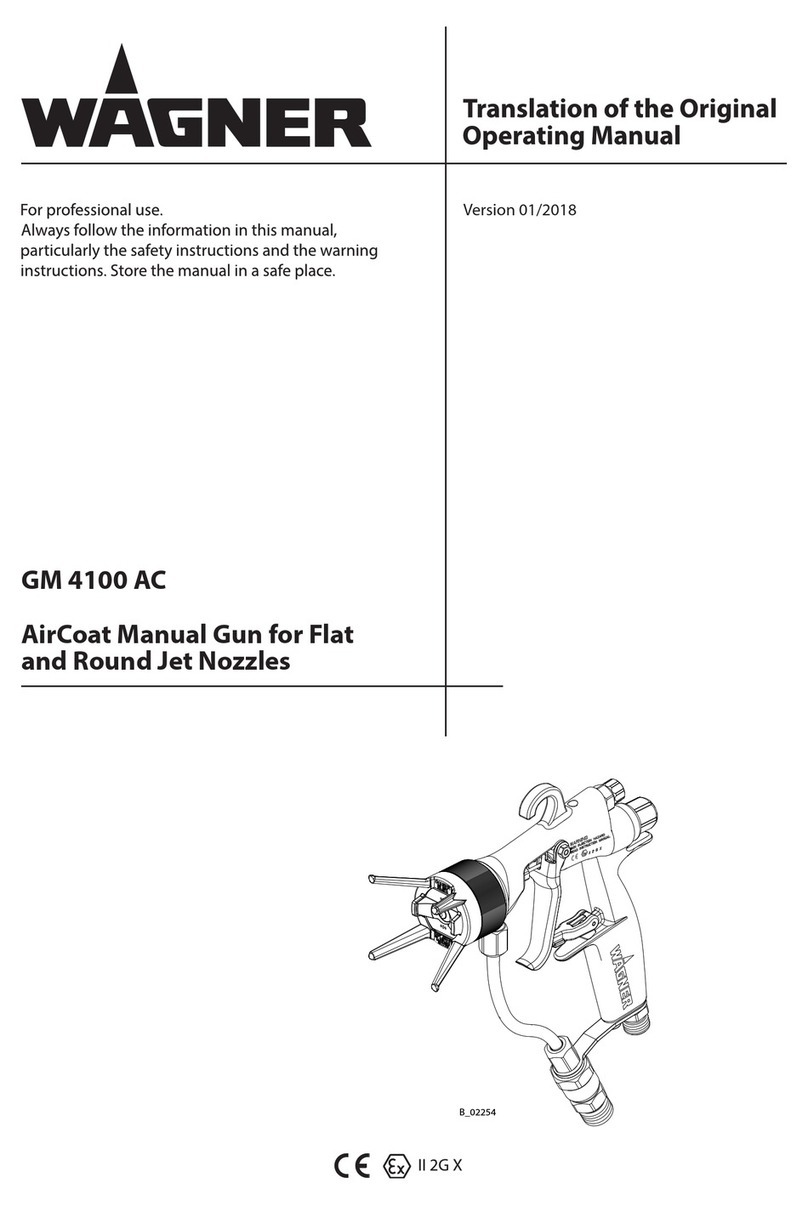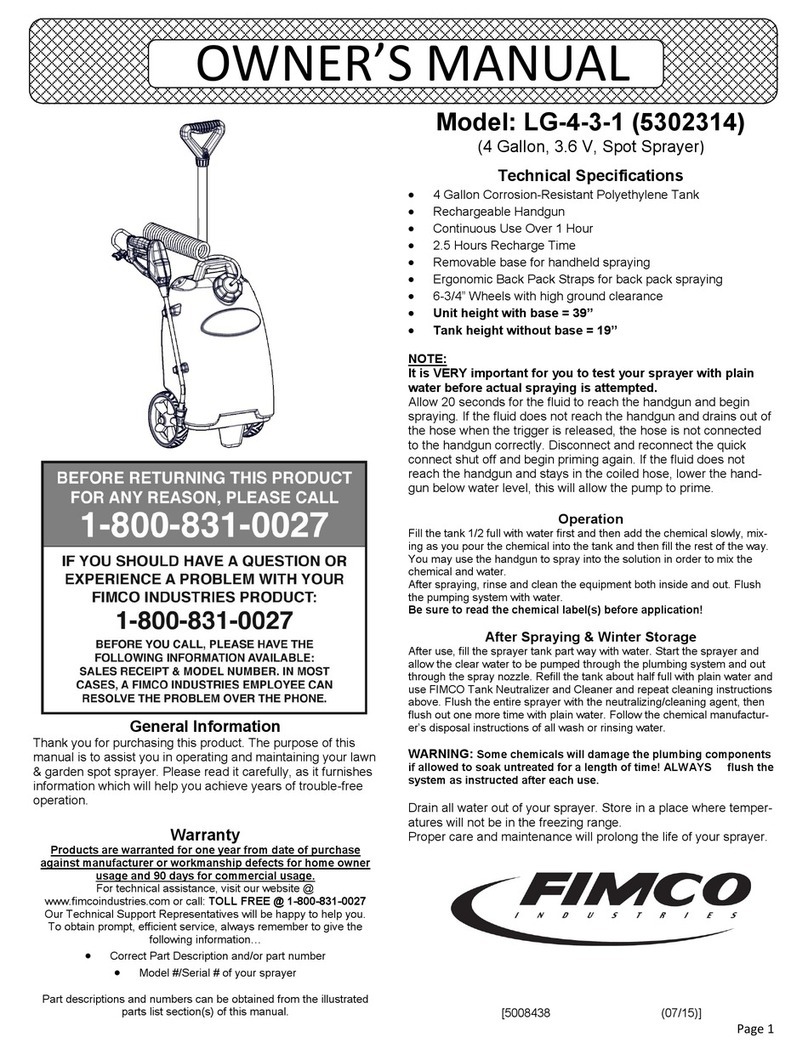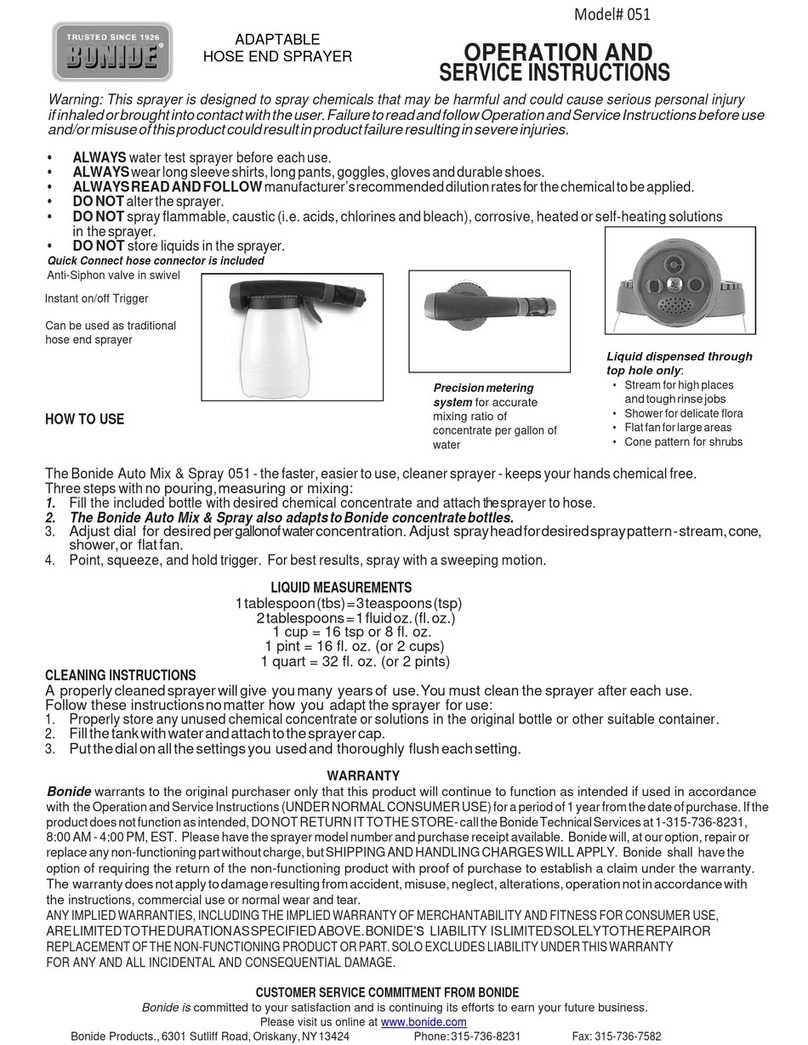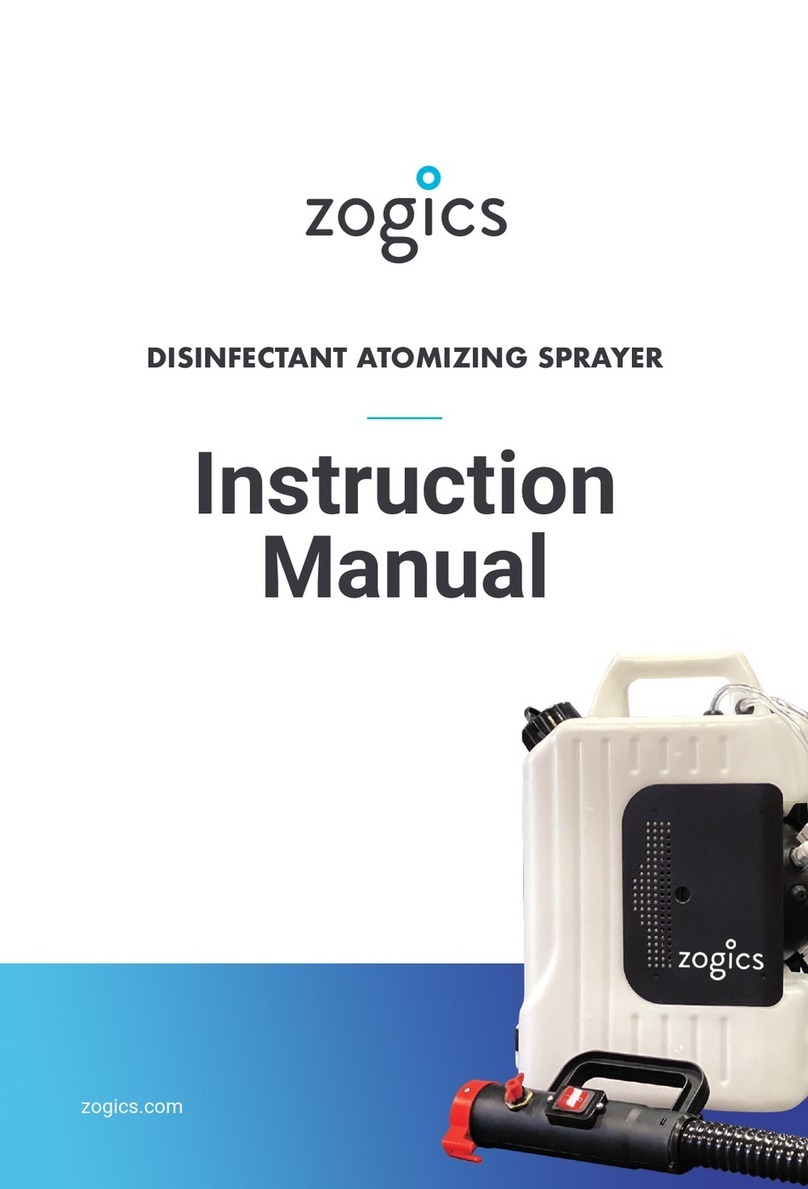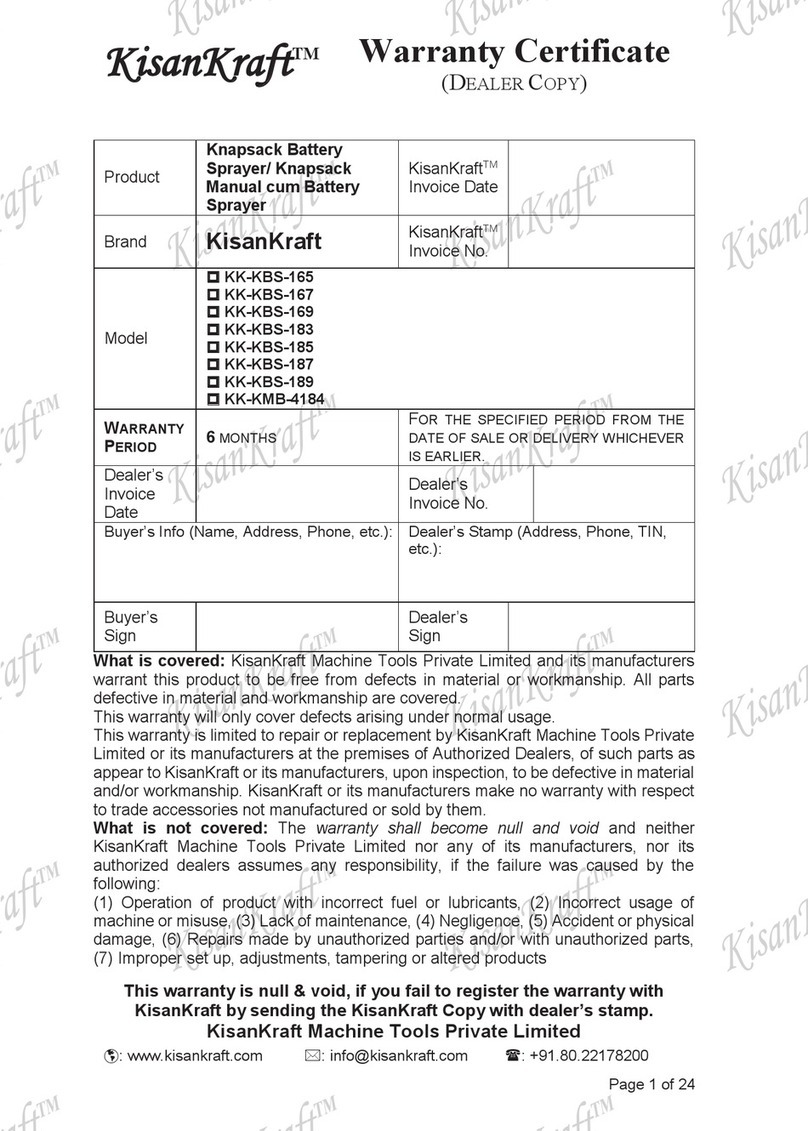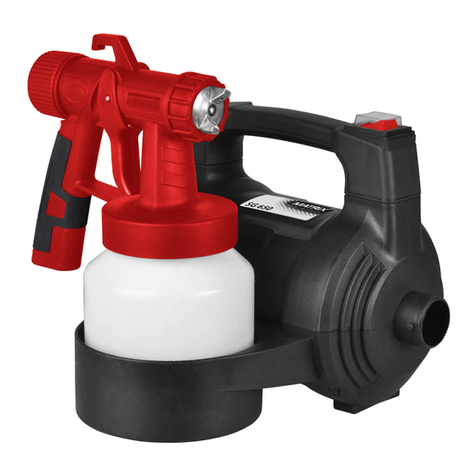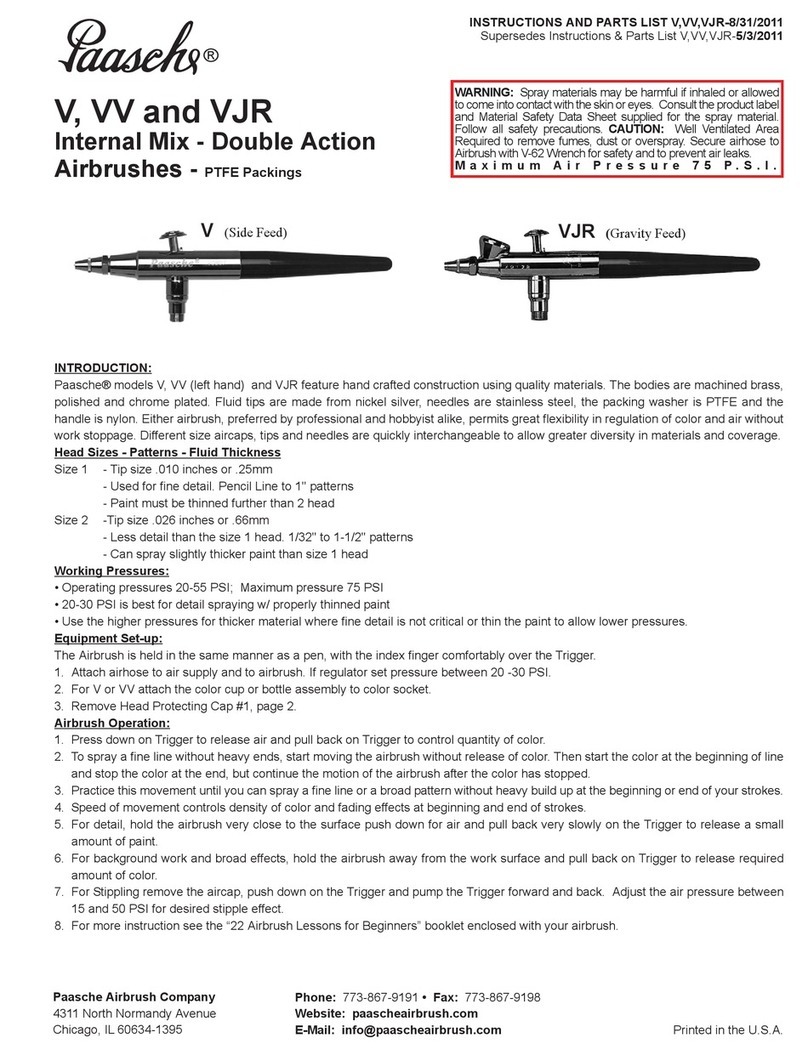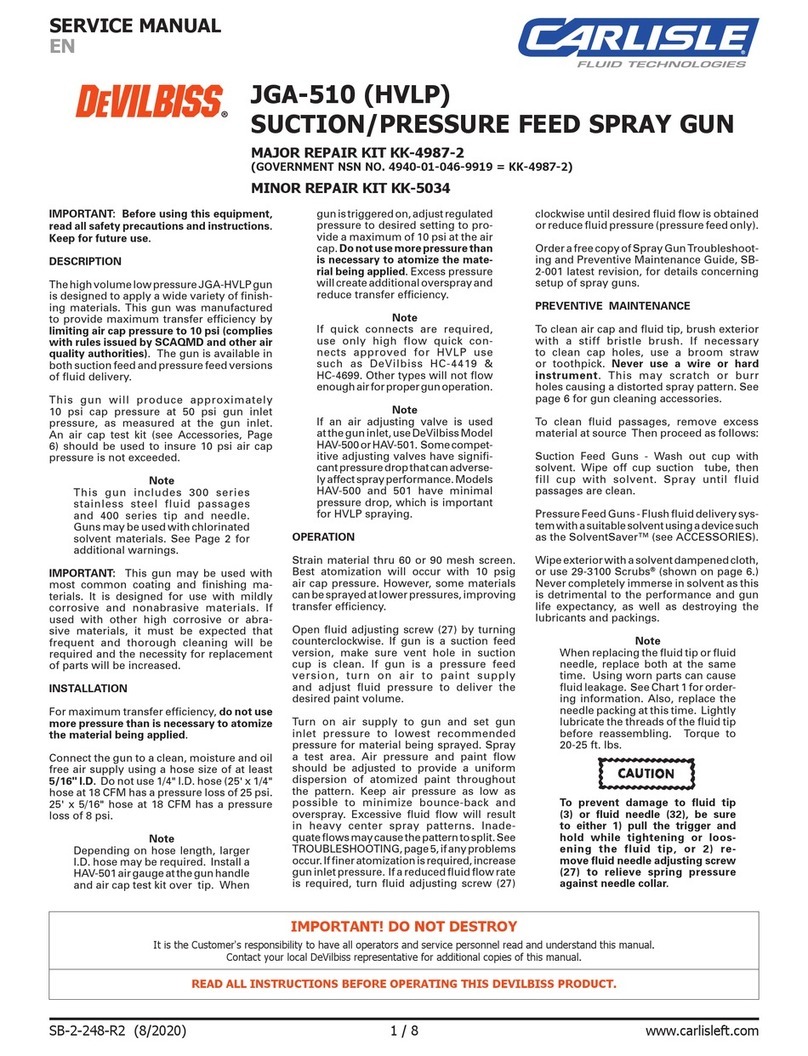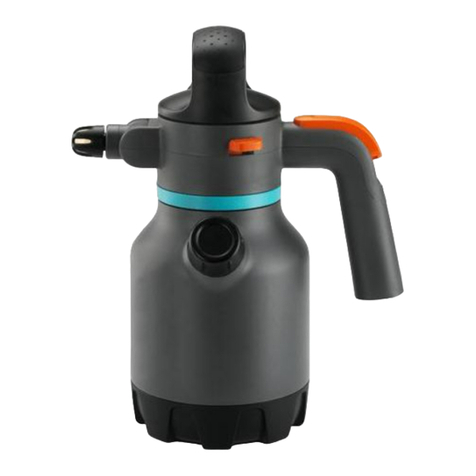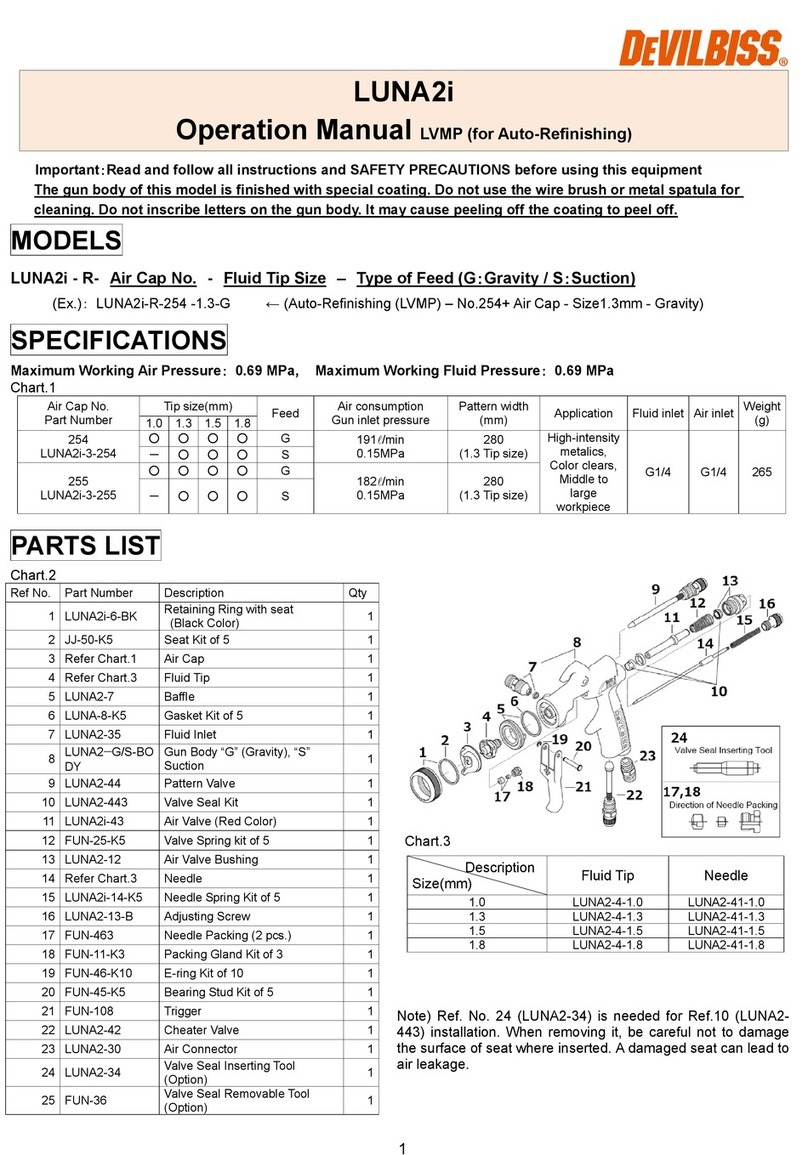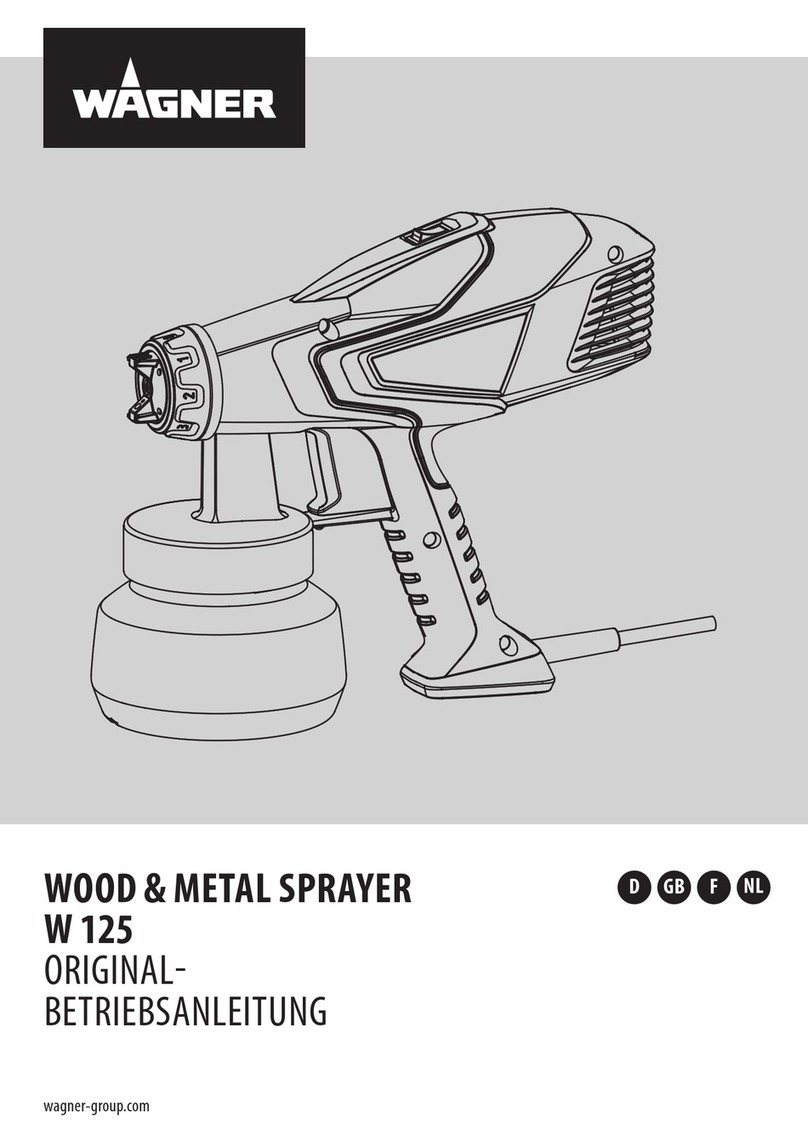
7
308-465
Setup
V. Ground the system.
WARNING
To
reduce the risk of static sparking, ground the
pump and all other equipment used or located in
the spray area. Check your local electrical code for
detailed grounding instructions for your area and
type of equipment.
Ground all of this equipment.
Also read
FIRE, EXPLOSION OR ELECTROS
-
TA
TIC SHOCK HAZARD
on page 2
.
1.
Pump
: one end of the ground wire (66) is already
connected to the air motor grounding lug. Connect
the clamp end of the ground wire to a true earth
ground. Connect the clamp end of the ground wire
to a true earth ground.
2.
Air and fluid hoses
: use only grounded hoses with
a maximum of 500 ft. (150 m) combined hose
length to ensure grounding continuity
.
3.
Heater:
by plugging into a properly grounded elec
-
trical outlet. If you use an extension cord, be sure
it is a 3-wire grounded cord which is properly sized
for the heater
.
4.
Air compressor
: according to manufacturer
’
s
recommendations.
5.
Electrostatic spray gun:
grounding is obtained
through connection to a properly grounded air
supply hose. Use only Graco electrically conduc
-
tive air supply hose (34) as supplied with this
system. Loosen the grounding lug locknut (W) and
washer (X). Insert the bare end of the air hose
ground wire into the slot in the lug and tighten the
locknut securely
. Connect the air hose ground wire
to the air motor grounding lug. See Fig. 4.
Fig. 4
2Connect
air hose ground wire to
pump grounding lug
1
W
X
30
0864
1
Pump ground wire.
Connect to a true earth ground
2
6.
Spray
gun:
grounding is obtained through connec
-
tion to properly grounded air and fluid hoses and
pump.
7.
Object being sprayed:
keep the work piece
hangers clean and grounded at all times. Contact
points must be sharp points or knife edges. Use a
megohmeter or a circuit tester buzzer or light to
verify that the parts are properly grounded.
8.
All electrically conductive objects or devices in the
spray area,
including paint containers, wash cans.
9.
All persons entering the spray area:
shoes must
have conductive soles, such as leather
, or
personal grounding straps must be worn. Rubber
of plastic soles are not conductive. The operator
must not wear gloves which insulate the hand from
the spray gun. The gloves must be conductive or
modified as shown in Fig. 5. Use the gun cover
,
supplied, to help protect your hand and the gun
from overspray
.
Fig. 5
3
in. (76 mm) square
cut out and finger
of glove cut of
f
10.
The
floor of the spray area
must be electrically
conductive and grounded. Do not cover the floor
with cardboard or any non–conductive material
which would interrupt grounding continuity
.
11.
Flammable liquids
in the spray area must be kept
in approved, grounded containers. Do not store
more than the quantity needed for one shift.
12.
Fluid supply container:
according to local code.
13.
All solvent pails used when flushing
, according to
local code. Use only metal pails, which are con
-
ductive. Do not place the pail on a non-conductive
surface, such as paper or cardboard, which inter
-
rupts the grounding continuity
.

